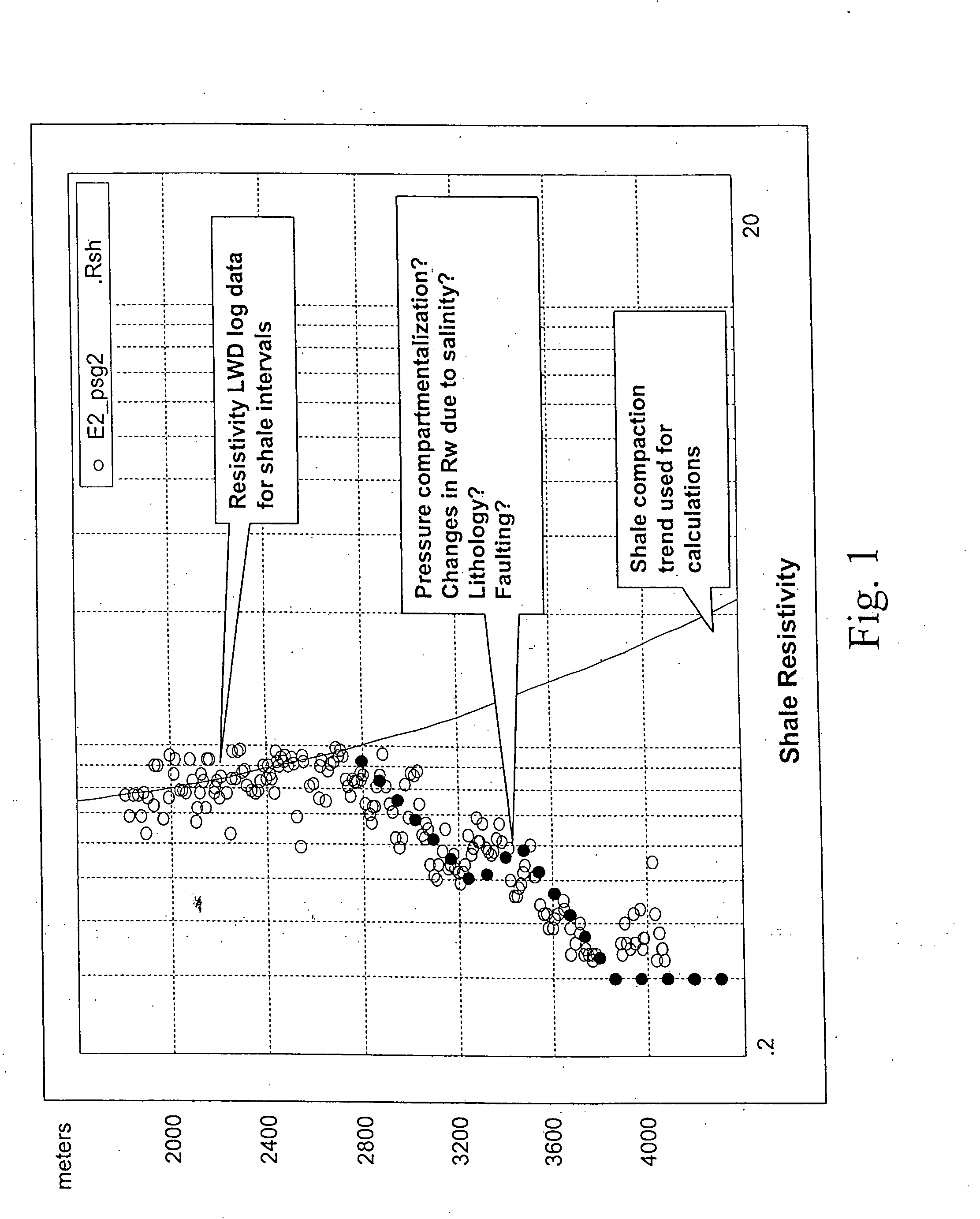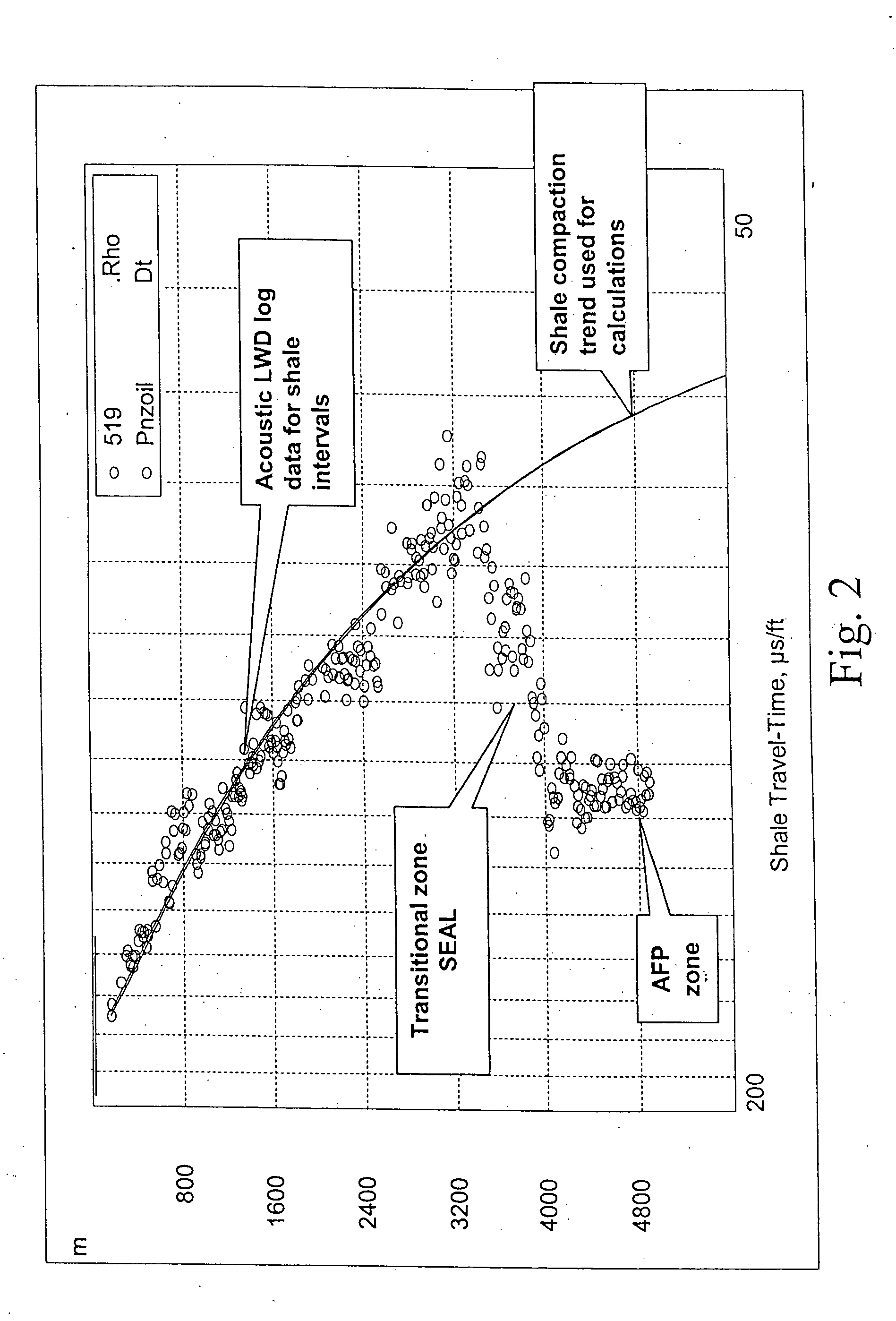Abnormal pressure determination using nuclear magnetic resonance logging
- Summary
- Abstract
- Description
- Claims
- Application Information
AI Technical Summary
Benefits of technology
Problems solved by technology
Method used
Image
Examples
example 1
Ben Eaton's Method
Ben Eaton's method for pore and fracture pressure analysis is one of the most widely industry-accepted techniques. Particularly, it has proven to be extremely valuable in the Gulf-of-Mexico area. Two key equations, developed by Eaton, after modifications are as follows: PP=P0-[P0-0.465*(φNMRNφNMRA)E]
where: PP—pore pressure or formation pressure gradient in psi / f P0—overburden pressure in psi / f; 0.465—water gradient, suggested by B. Eaton for Gulf-of-Mexico; φNMRN—normalized NMR-porosity for given depth; φNMRA—apparent (measured) NMR-porosity for given depth; E—Eaton coefficient, which was suggested to be 1.2 when resistivity data used and 3.0 for acoustic data; however later research indicate that depending on reservoir conditions, lithology, and the like this coefficient may vary from 1.2 to 5.0. Advantageously, an Eaton coefficient is determined for a region and utilizing NRM bound water porosity values.
Once the pore pressure has been computed the fract...
example 2
Equivalent Depth Method
Another known method for formation pressure analysis that can be used according to this invention is the Equivalent Depth Method. With reference to FIG. 9, the technique generally requires several steps: First, porosity φNMRA is plotted versus depth and a normal trend line is established. Second, a vertical line that intercepts the normal trend of NMR porosity is drawn. Third, depths at point of interest “A” and point of interception “B” are recorded. Fourth, a formation pressure at point “A”, Pp=D1−0.535D2, is calculated.
It should be noted that many pore and fracture pressure models require the use of shale values for compaction trend. Therefore, in accordance with a specific embodiment of the invention, the following parameter may be used as a shale indicator on spectral porosity data: for consolidated formations CBWBFI≥T1CUT-OFF,
and for non-consolidated formations CBWCBW+BVI≥T1CUT-OFF.
The statistical studies of overpressured formations in the Gulf...
PUM
 Login to View More
Login to View More Abstract
Description
Claims
Application Information
 Login to View More
Login to View More - R&D
- Intellectual Property
- Life Sciences
- Materials
- Tech Scout
- Unparalleled Data Quality
- Higher Quality Content
- 60% Fewer Hallucinations
Browse by: Latest US Patents, China's latest patents, Technical Efficacy Thesaurus, Application Domain, Technology Topic, Popular Technical Reports.
© 2025 PatSnap. All rights reserved.Legal|Privacy policy|Modern Slavery Act Transparency Statement|Sitemap|About US| Contact US: help@patsnap.com



